
Lot 48

RARE GROUP OF FOUR WOODBLOCK PRINTS BY DING LIANGXIAN (ACTIVE 1735-1750)
QING DYNASTY, 18TH CENTURY
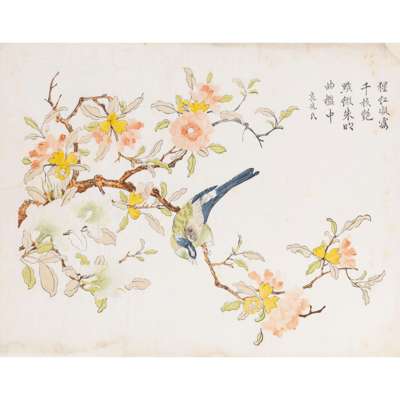

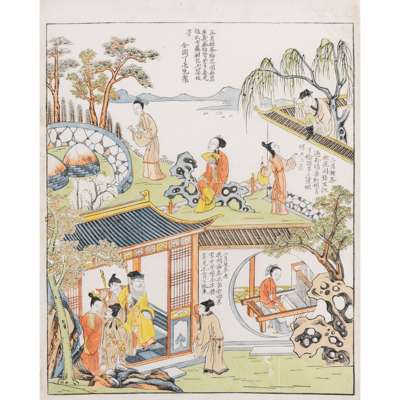



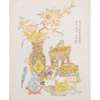
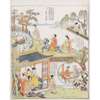

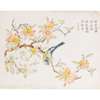
Fine Asian & Islamic Works of Art
Auction: 4 November 2022 from 10:00 GMT
Description
清 丁亮先 罕見饾版拱花套印 博古花鳥、古玩 及 十二月採茶歌圖 版畫(共四幅)
comprising: three prints of ink, colour and gauffrage on paper, one depicting arbutus and praying mantis, one with pomegranate, magnolia and bird, and the other an arrangement of antiquities, all with inscriptions and signed 'Liangxian shi' (Clan of Liangxian); together with one print, ink and colour on paper, depicting the first three months of 'Song of the Twelve Months in the Tune of the Tea Picker's Song', each month with inscriptions, signed 'Ding Liangxian', unframed
Dimensions
largest: 37.5cm x 30.5cm
Provenance
Provenance: Private English collection
Footnote
Note: The name Ding Liangxian appears on a number of prints from Suzhou, Jinchang district. It refers either to a print workshop or the ingenious artist himself. They specialised in subject matters such as flowers, fruits and birds.
Although rare in the market, the prints presented in this lot can be compared to highly similar examples in the collection of the British Museum. For the 'arbutus and praying mantis', dated to the Qing dynasty, c.1735-c.1750, see museum no. 1906,1128,0.14. A related example, depicting pomegranates and praying mantis, offered at Sungari Beijing, 6-7 June 2019, lot 8664; For the 'pomegranate, magnolia and bird', similarly dated, see British Museum no. 1906,1128,0.6; For a similar example of the 'Antiquities', compare to museum no. 1906,1128,0.22. Other related examples, similarly depicting an arrangement of antiquities in different fashions, see museum nos. 1906,1128,0.24; 1906,1128,0.23 and 1906,1128,0.25.
The last print in this lot depicts the first three months of the ballad Song of the Twelve Months in the Tune of the Tea Picker’s Song. It consists of three scenes from top to bottom, featuring ballads for January, February, and March according to the Chinese lunar calendar. Compare to a related example depicting ballads for October, November and December, see British Museum no. 1991,1015,0.1. According to the curator's comments, which potentially could apply to the print in this lot, 'this print incorporates scenes from three popular dramas, turning each of them into a ballad. By illustrating and combining popular folk songs with scenes of dramas of the time, Ding Liangxian created a new type of woodblock print for urban audiences.'









